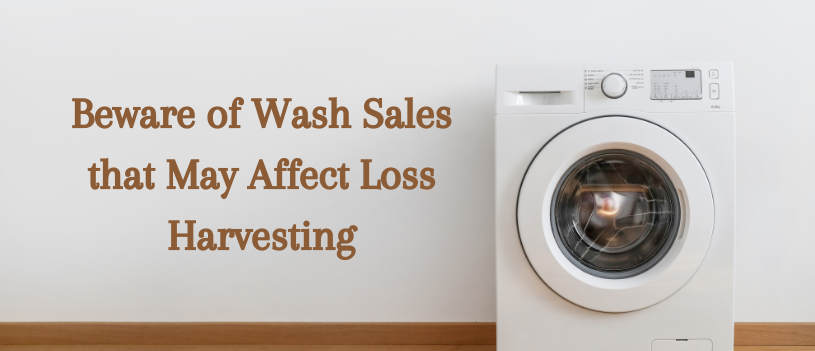If you’re optimistic about the stock markets in 2023, you might be considering strategies to make the most of your investments. One popular approach is called “harvesting” capital losses, where you sell securities that would result in losses and use those losses to offset gains and reduce your tax liability.
However, there’s a catch. The IRS has rules on something called “wash sales” that can affect your tax planning. A wash sale occurs when you sell a stock at a loss and repurchase the same stock within 30 days before or after the sale. This triggers certain rules that disallow capital loss for tax purposes.
Here are some key points to keep in mind about wash sales:
- The disallowed loss isn’t completely lost. It’s added to the basis (the original cost) and holding period of the replacement stock. If you buy fewer shares than you sold, the wash-sale treatment only applies to the number of shares you repurchased.
- The wash-sale window is actually 61 days, covering the 30 days before and after your sale. So, if you sell a stock at a loss in late December and repurchase it in early January, it still counts as a wash sale.
- Wash-sale rules are triggered when you buy “substantially identical securities” within the wash-sale window. However, you can avoid the rules by purchasing stocks of a different company in the same industry or investing in a mutual fund or exchange-traded fund (ETF) that tracks that industry.
The wash-sale rules don’t directly apply to transactions within your 401(k) or IRA accounts since capital gains and losses are not tracked in those accounts. But be aware that you can’t avoid the rules by repurchasing the same security in your retirement accounts.
Certain types of trades, such as options, employee stock options, and shares bought through employee stock purchase plans or dividend reinvestment plans, can trigger wash sales if they occur within 30 days of selling the stock at a loss.
Your brokerage firm will track and report wash sales within each account, but they may not track across different accounts you have with them or with other brokers. So, you need to consider all your trading activity across all your accounts.
You’ll receive Form 1099-B from your broker, which reports all your stock sales from the previous year. It will indicate any nondeductible loss from wash sales involving covered securities. Even though the loss won’t be immediately recognized, you still need to report the wash sale on your tax return and make adjustments when you sell the replacement shares.
Remember, it’s important to understand and comply with the IRS rules to avoid any negative consequences for your tax planning.
Be sure to speak with your financial advisor before initiating potential transactions that could prevent you from using the losses due to the sale and repurchase being too close together.
7 Wash Sale Facts To Know Before Selling Stock For Tax Loss Harvesting (forbes.com)
